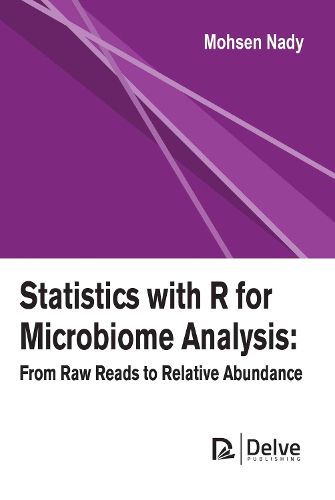Readings Newsletter
Become a Readings Member to make your shopping experience even easier.
Sign in or sign up for free!
You’re not far away from qualifying for FREE standard shipping within Australia
You’ve qualified for FREE standard shipping within Australia
The cart is loading…






This book covers the necessary analysis steps for dealing with microbiome data. The microbial samples are sequenced into raw reads or fastq files. These raw reads should be quality checked to assure their quality per base or per read. Then, after removing the errors, we can infer their exact amplicon sequence variants (ASVs). After that, we taxonomically classify these sequences to represent the different taxonomy levels of species, genus, family, order, class, and phylum and generate a phylogenetic tree. Finally, the sequence data, the taxonomy table, phylogenetic tree, and sample data are combined in a single phyloseq object for ease of plotting, manipulation, and analysis of the different components of microbiome data. The final phyloseq object can also be cleaned for certain low prevalent sequences. All these steps are explained in R codes using a freely available microbiome data of 360 fecal samples.
$9.00 standard shipping within Australia
FREE standard shipping within Australia for orders over $100.00
Express & International shipping calculated at checkout
This book covers the necessary analysis steps for dealing with microbiome data. The microbial samples are sequenced into raw reads or fastq files. These raw reads should be quality checked to assure their quality per base or per read. Then, after removing the errors, we can infer their exact amplicon sequence variants (ASVs). After that, we taxonomically classify these sequences to represent the different taxonomy levels of species, genus, family, order, class, and phylum and generate a phylogenetic tree. Finally, the sequence data, the taxonomy table, phylogenetic tree, and sample data are combined in a single phyloseq object for ease of plotting, manipulation, and analysis of the different components of microbiome data. The final phyloseq object can also be cleaned for certain low prevalent sequences. All these steps are explained in R codes using a freely available microbiome data of 360 fecal samples.